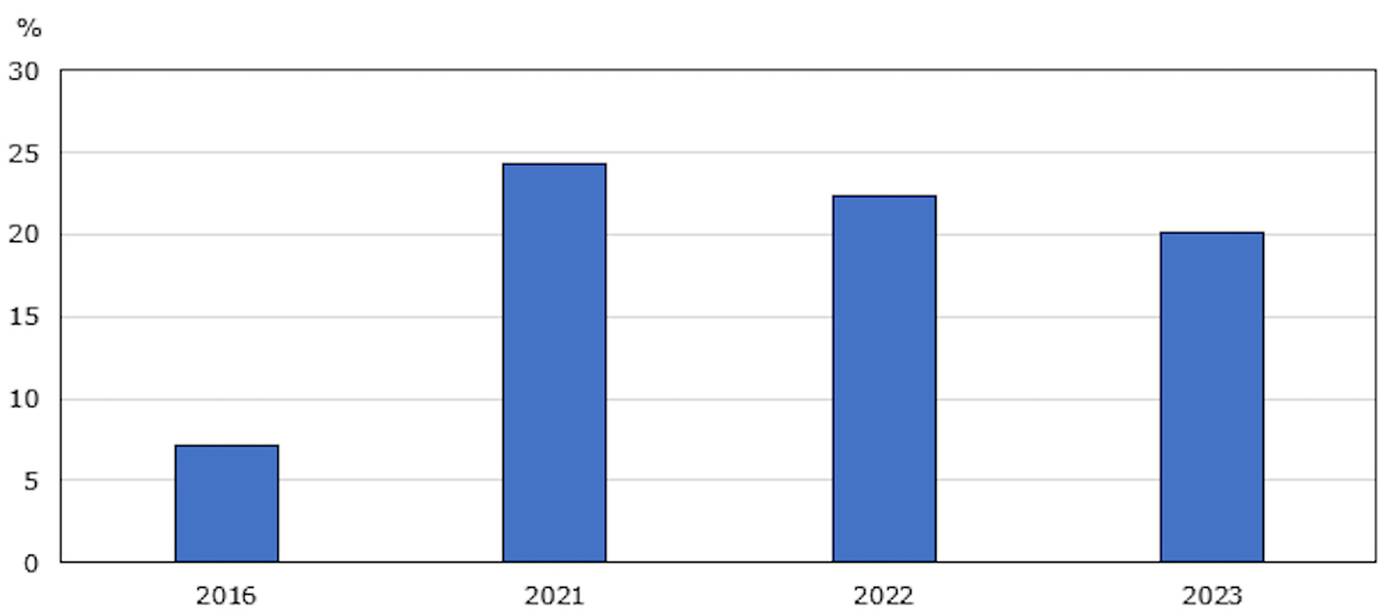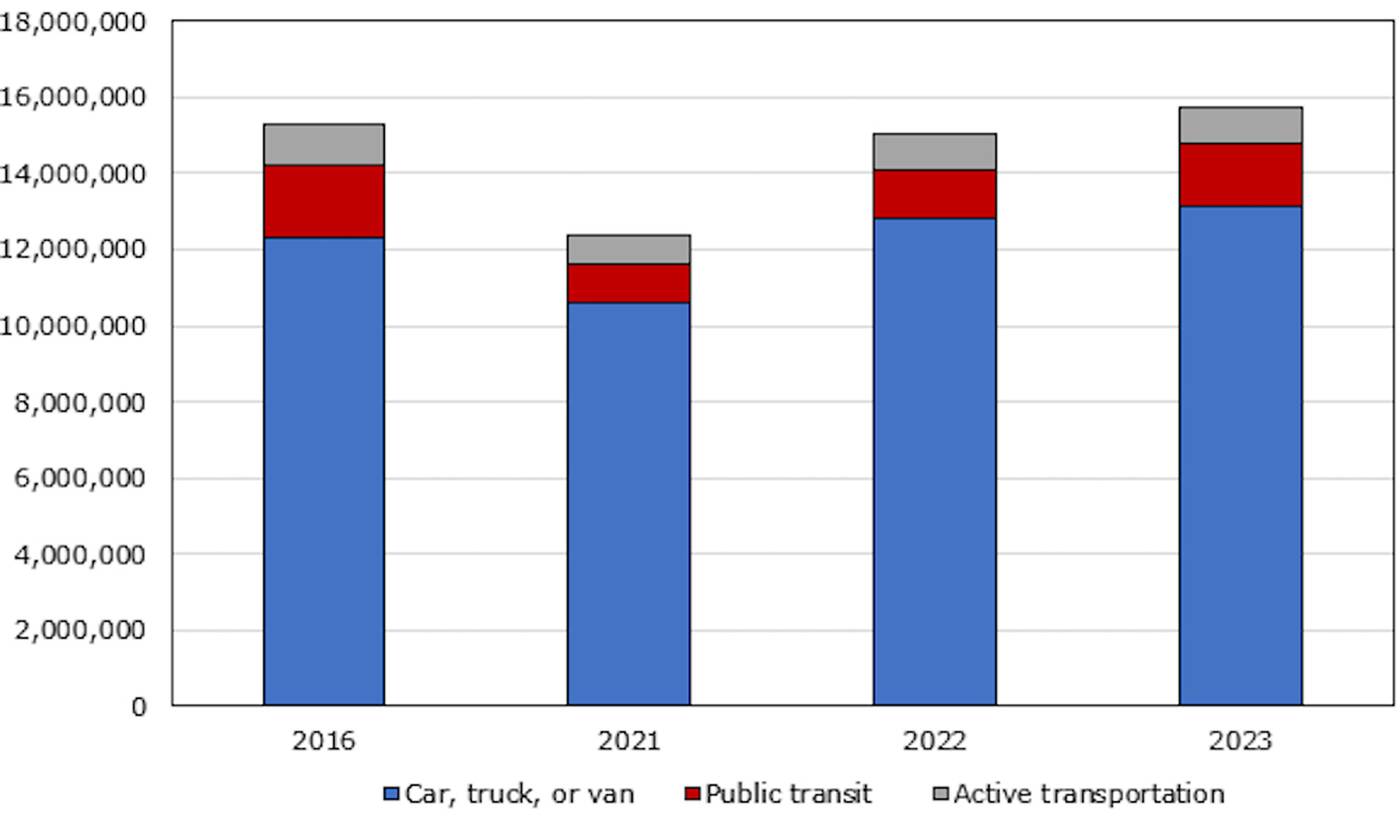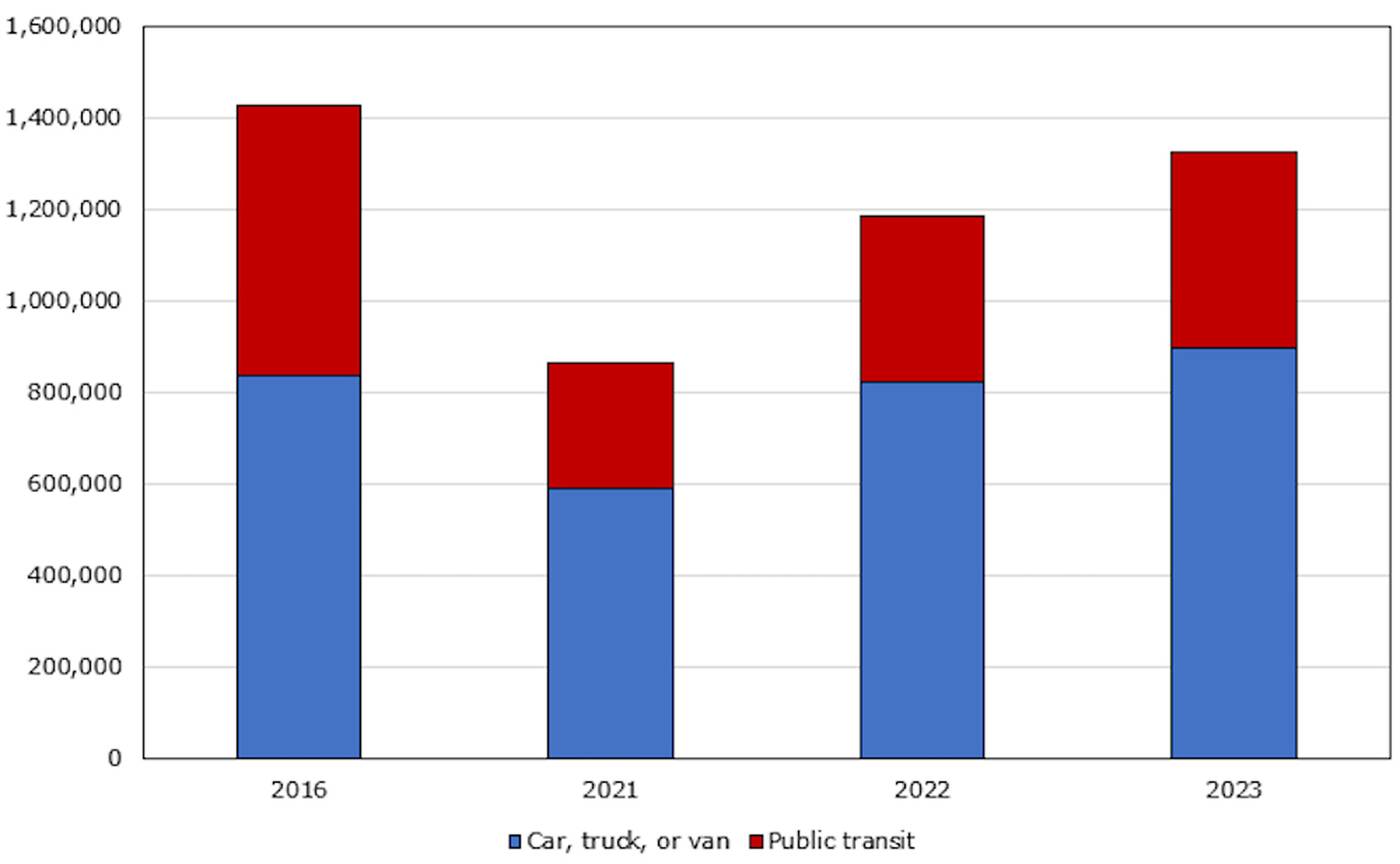
More Canadians commuting and leaving home for work again
There was a noticeable shift in commuting and workplace trends this past spring, inching closer towards pre-pandemic norms, according to Statistics Canada's newly released data this week.
About 16 million people across Canada — equivalent to about 80 per cent of the country's workers — commuted to a location outside their home for work in May 2023. This is up by 724,000 compared to May 2022, 3.3 million compared to May 2021, and about 0.5 million compared to May 2016.
This represents a rewind on some of the semi-remote work patterns that became entrenched during the pandemic.
The proportion of workers usually working from home decreased to 20.1 per cent in May 2023 — down from 24.3 per cent in May 2021 and 22.4 per cent in May 2022, just as pandemic-time health safety restrictions were lifted. But this is still well above the pre-pandemic levels of about 7 per cent.
Those whose usual place of work was a location other than their home increased from 78 per cent in May 2022 to 80 per cent in May 2023, including gains of 9 per cent for public administration (64 per cent), 6.7 per cent for information, culture, and recreation (67.6 per cent), and 4.1 per cent for professional, scientific, and technical services (45.2 per cent).
 While a return to pre-pandemic behavioural norms is one of the key factors, there are also inputs as well, such as population and economic growth, the availability of public transit services and other transportation infrastructure, and personal and financial considerations.
While a return to pre-pandemic behavioural norms is one of the key factors, there are also inputs as well, such as population and economic growth, the availability of public transit services and other transportation infrastructure, and personal and financial considerations.
Returning to public transit
Nationwide, between May 2021 and May 2023, there was a faster percentage increase in public transit commuters (+63.6 per cent; +628,000), which helped pushed down the increase in car commuters (+24.2 per cent; +2.6 million).
As of May 2023, 10.1% of Canada's commuters or 1.6 million people travelled to work using public transit — up from the modal share of 8.5 per cent or 1.3 million in May 2022, and 7.8 per cent or one million in May 2021. But this is still below the modal share of 12.6 per cent or 1.9 million in May 2016.
 Public transit use to reach the workplace increased in eight provinces between May 2021 and May 2023:
Public transit use to reach the workplace increased in eight provinces between May 2021 and May 2023:
- Saskatchewan: +123.6 per cent; +9,600
- British Columbia: +89.7 per cent; +153,000
- Nova Scotia: +87.6 per cent; +12,000
- Ontario: +83.2 per cent; +320,000
- New Brunswick: +82.5 per cent; +3,500
- Manitoba: +54.0 per cent; +16,000
- Alberta: +52.8 per cent; +46,000
- Quebec: +23.2 per cent; +66,000
The proportion of commuters taking public transit instead of other modes grew in three provinces between May 2021 and May 2023:
- British Columbia: +5.0 per cent to 14.5 per cent of all commuters
- Ontario: +3.0 per cent to 11.7 per cent of all commuters
- Nova Scotia: +1.8 per cent to 6.0 per cent of all commuters
When it comes to public transit usage for commuting to work in each of Canada's three largest urban regions, these were the changes between May 2021 and May 2023:
- Greater Toronto: +92.5 per cent; +265,000
- Metro Vancouver: +89.7 per cent; +129,000
- Greater Montreal: +24.8 per cent; +59,000
Moreover, the proportion of commuters taking public transit increased by 7.4 per cent to 22.5 per cent of the overall modal share in Metro Vancouver, followed by an uptick of 4.9 per cent to 20.6 per cent in Greater Toronto. However, Greater Montreal remained constant with little change, hovering at 16.4 per cent.
More car trips to work
Between May 2021 and May 2023, all provinces saw an increase in the number of people traveling to work by car, with notable increases of 10 per cent (+6,600) for Prince Edward Island, 7.2 per cent (+123,000) for Alberta, and 4.8 per cent (+227,000) for Ontario. Little change was recorded in the other provinces.
Over the same period, the number of workers mainly commuting by car went up by 601,000 to two million in Greater Toronto, 151,000 to 1.3 million in Greater Montreal, and 118,000 to 832,000 in Metro Vancouver.
 Furthermore, by May 2023, car commuting had returned to its May 2016 level in Greater Montreal, and surpassed this pre-pandemic 2016 level in Greater Toronto and Metro Vancouver.
Furthermore, by May 2023, car commuting had returned to its May 2016 level in Greater Montreal, and surpassed this pre-pandemic 2016 level in Greater Toronto and Metro Vancouver.
But compared to May 2021, the share of car commuters in May 2023 was 2 per cent lower in Greater Toronto (74.1 per cent), 2.7 per cent lower in Greater Montreal (72.8 per cent), and 6.2 per cent lower in Metro Vancouver (68.5 per cent).
Shutterstock/Vadim Rodnev
Latest Videos
Latest Videos
Join the conversation Load comments







